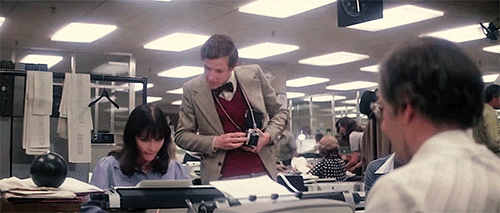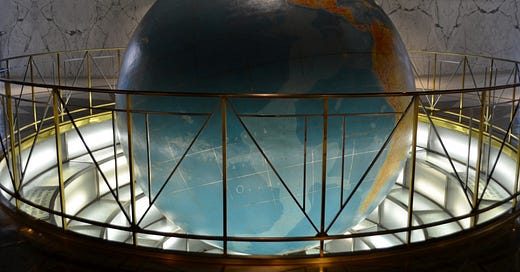The pandemic is forcing media to transform in subtle and not-so-subtle ways
Print pub shuts down; newspaper chain closes office space
I’ve been in a wistful mood lately.
Perhaps it’s because I spent a few days at my parents’ house, rummaging through the remaining detritus of my childhood. Perhaps it’s because I just had a birthday, which is always a good reminder of our mortality.
And speaking of mortality, perhaps it’s because this week is the anniversary of the time my car got plowed by an 18-wheel gas-tank truck going 75mph and we walked away without a scratch.
(Any literary agents out there; I’ve got 60,000 words for you sitting on my hard drive waiting for you.)
But mainly I think I’ve been thinking about the past more recently because it’s a good lesson on how to move into the future. And a time when the media industry once again finds itself searching for sustainability, perhaps it’s good to look at our past indiscretions to make sure we don’t fall into similar traps. It’s something media companies rarely do.
Yesterday we talked about the pendulum swinging back to subscriptions. And while I was going down Memory Lane I came across an old (February 2013) article I wrote where I asked media execs what they would do if they were able to start a publication from scratch.
Back in 2013, when times were not as stupid (but stupid enough!), David Payne, then the chief digital officer of Gannett told me he “would start with a clearer consumer trade off for content. In the utopian world, users would either subscribe (directly or as part of a bundle from the ISPs) or trade their time for free content by watching or engaging with an ad. This simple change would create a materially different user experience with high value ads, less clutter and more sustainability.”
Here’s what Jason Pontin, then the CEO and editor in chief of MIT Technology Review told me:
The great question is: Would I want a print publication if I could start from scratch? And I suppose the answer, considered purely economically, is that I couldn’t afford to launch a print publication if I was starting from scratch. On the other hand, the print publication, now that the business has stabilized, brings in a tidy set of revenue streams in subscriptions, print advertising, and licensing fees, and it supports the online CPM, too. I’m glad we still have a printed publication, even though we’re digital first. If I could do anything differently, I now sort of wish I hadn’t reduced our print frequency to six times a year in 2005. At the time, I’d just been made the CEO of Technology Review, having previously been only its editor-in-chief, and I was trying to reduce the losses. But now I find a bi-monthly frequency a little hard to sell to advertisers.
Let’s come back to 2020. As the pandemic has upended life as we know it, it’s also forced companies to speed up their digital transformation in some interesting ways.
According to the Financial Times this week, local print publication Time Out will likely be shuttering many of its 40-city print editions.
Julio Bruno, the group’s chief executive, told the Financial Times that the 52-year-old magazine planned to resume print distribution only in London, where the title appeared on Tuesday for the first time in six months, Madrid and Barcelona. The company will instead focus on its digital platform and food markets. The group is unlikely to resume printing in the US and Portugal, with other territories under review by management.
The bigger media news yesterday, though, was Tribune Publishing announced that it will be closing 5 newsrooms: the New York Daily News, the Orlando Sentinel, the Capital Gazette (Annapolis, Maryland), The Morning Call (Allentown, PA), and The Carroll County Times (Westminster, Maryland).

(Image via Giphy; Superman filmed in the Daily News newsroom)
Over the past several months, Alden Global Capital, a hedge fund that has aggressively cut costs at the newspapers it owns through the chain MediaNews Group, disclosed it owned nearly one-third of the publicly traded Tribune Publishing shares. It also amassed three of its seven board seats. Before the pandemic, Tribune Publishing offered buyouts to journalists, and it has since imposed furloughs and pay cuts.
The cuts, as well as the chance that Alden might take over the company outright, prompted employees at several Tribune Publishing newspapers to start campaigns calling for local benefactors to “save” their publications.



The Chicago Tribune reported last week that Tribune Publishing has been ”in talks with Prudential Plaza owner Sterling Bay for a buyout of its approximately 137,000-square-foot lease in the office complex overlooking Millennium Park, according to real estate sources.”
While at the same time, Tribune Publishing, according to filing documents, the Chicago Tribune reported, “hasn’t made rent payments at most of the properties it leases since March.”
Yesterday’s announcement was telegraphed in last week’s earnings call:
In its Wednesday earnings call with analysts, Tribune Publishing CEO Terry Jimenez referenced savings in occupancy costs, “where we’ve reduced our rent and related expenditures, especially relevant as a result of not working out of our own offices.”
Jimenez added, “However, in order to sustain ourselves for the long term, we’ve positioned the company as a smaller, more agile operation. To do so, we have and are taking steps to reduce our primary expense drivers by focusing on our fixed cost infrastructure, reducing our real estate footprint, and reducing compensation expense.”

Axios has a good roundup of other publications that have said they’re closing or looking to close office space to reduce overhead as a result of financial challenges wrought by the pandemic.
Beyond newspapers, digital-only publications like Skift are also closing office doors and moving to a remote work situation.
The last 5 months have shown that news organizations can operate under the most stressful of situations, and now companies looking to save as much money as possible are trying to move forward to an environment that eliminates one of the biggest costs. But doing that seems puts the focus on media-as-a-business, filled with line items on a P&L and not the human side of media.
This is perhaps one of the bigger ironies of these moves: shutting down the ability for reporters to meet each other in person, shoot the shit over coffee and donuts, while also asking reporters to do their jobs in meeting sources and telling stories to the public.
On the business side, not having a physical office will play a role in sales teams and biz dev teams and ad ops teams. Not just for their individual responsibilities — a nice boardroom to host clients, for one — but also the general culture of a media company.
How do you build a team, and that goes with it — like trust and dependency; culture — if that team can’t physically be together? Can managers be effective operating solely through Slack or Zoom? We’ve been forced to operate for the last five months under these conditions, barely surviving. But how do we move forward in a smart and safe way?
So I ask you, dear reader, if you could start a media company right now, how would you do it? Would you have an office? Would you have a print product? Would you sell ads or just do subscriptions? Sound off in the comments or drop me a line.
Thank you for allowing me in your inbox, today and everyday. If you have tips, hit me up! Or you can follow me on Twitter. And if you like this newsletter, please consider sharing on your social sites. Have a great day!
Belinda Carlisle, “Heaven Is A Place on Earth”
Some interesting links:
Tucker Carlson’s mangling of Kamala Harris’s name was all about disrespect (Washington Post)
QAnon Followers Are Hijacking the #SaveTheChildren Movement (New York Times)
US seizes digital currency accounts used by militant groups (AP)
Uber Could Halt California Operations for Months Following Court Order (Autoweek)
Streaming now accounts for 25% of U.S. TV usage (Mediapost)
AMC is reopening its theaters next week with 15-cent tickets (CNN)



